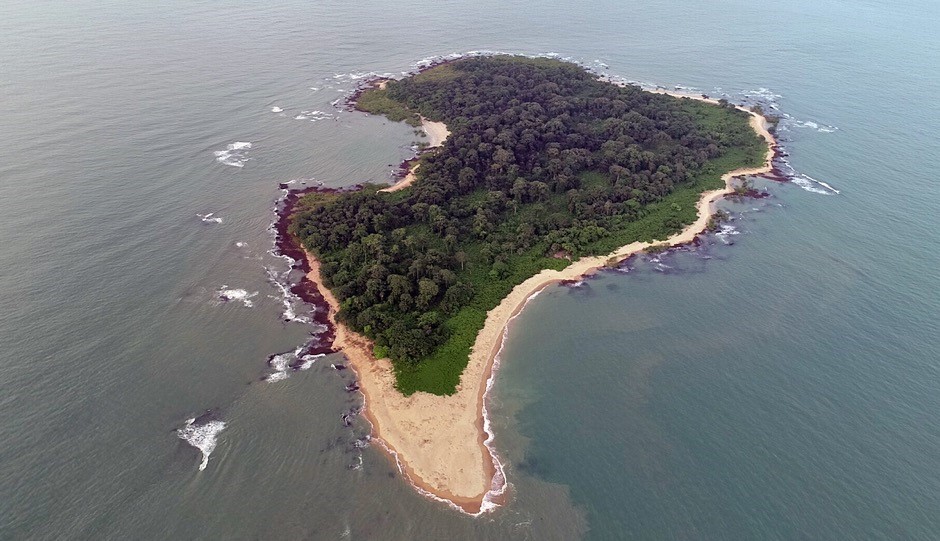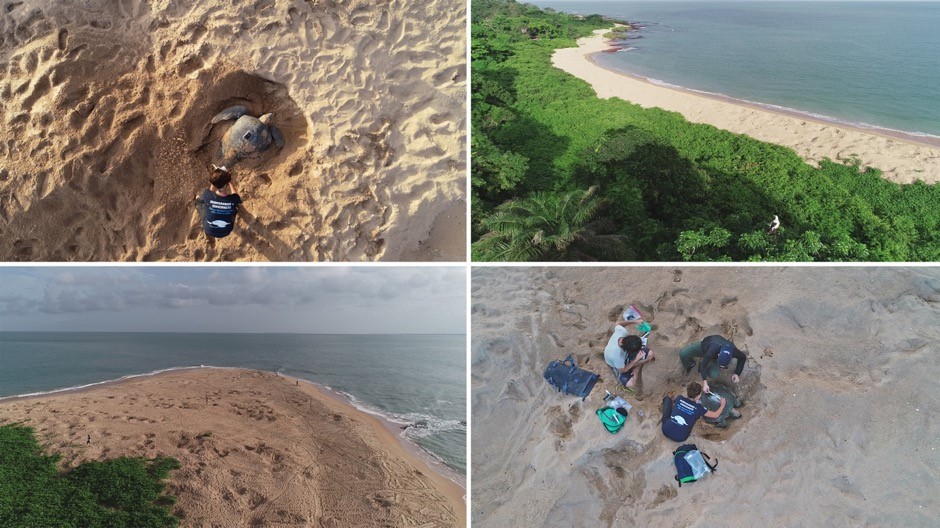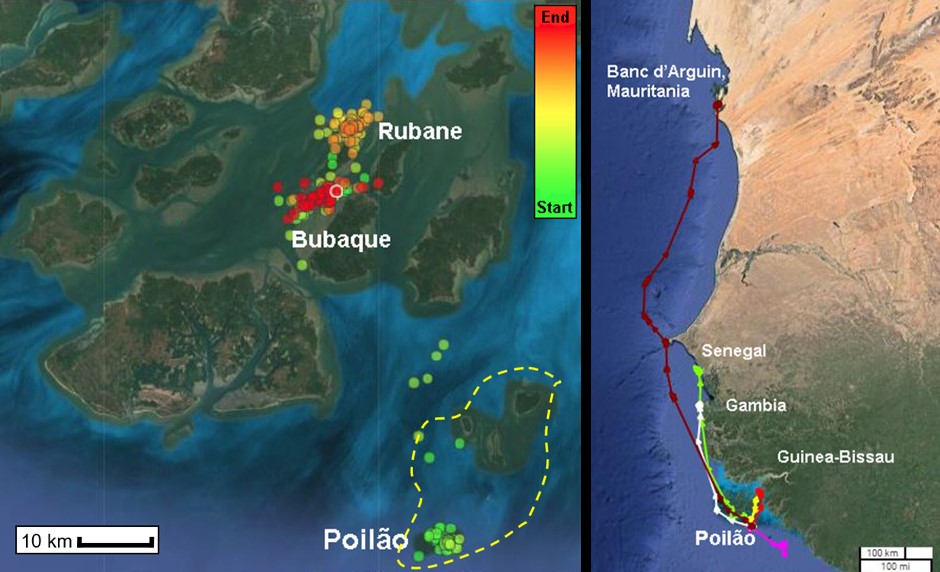Green turtles from Guinea-Bissau: where do they come from and where do they go?
Along with other iconic fauna, such as manatees, hippopotamus, parrots, and several species of migratory sea birds and waders, the green sea turtle thrives in the enchanting Bijagós Archipelago. At the southernmost end of the Bijagós, we can find the João-Vieira and Poilão Marine National Park (JVPMNP) and the tiny island of Poilão (10°52’N, 15°43’W). With a beach extending for only 2 km, it hosts one of the most abundant green turtle rookeries in the world, third largest in the Atlantic, and the most important in Africa, with an average of 27000 nest per year (2013 – 2017).

Figure 1. Poilão Island, Bijagós, home of the largest African green turtle nesting population. Credits: MVarela
Within the current project funded by the MAVA Foundation; ‘Consolidation of Sea Turtle Conservation at the Bijagós Archipelago, Guinea-Bissau’, the researchers Prof. Paulo Catry and Dr. Rita Patrício from MARE – ISPA, Instituto Universitário partnered up with the Institute of Biodiversity and Protected Areas (IBAP) of Guinea-Bissau to research the movements of adult green turtles within their breeding area and along their post-nesting migration.
During the nesting season of 2018 we have successfully deployed 20 satellite tracking devices on female green turtles found nesting at Poilão from August to November. Turtles were also tagged with unique flipper tags and Passive Integrated Transponders (PIT) tags. Thanks to the satellite technology we are watching closely the daily movements of these green turtles and have already some very interesting findings.

Figure 2. Researchers deploying satellite tags on nesting green turtles and aerial views of nesting beaches in Poilão Island. Credits: MVarela
We have learned that some nesting females interchange between Poilão and the islands of Meio and Cavalos, also within the JVPMNP, also supported by tag-returns from previous years. Others venture outside the limits of the marine protected area (MPA) in between clutches, which was unexpected, as marine turtles usually rest near the nesting beach while preparing for the next clutch.

Figure 3. Satellite tags and green turtles with tags heading back to sea after nesting at Poilão Island. Credits: MVarela, RPatrício.
Lastly, once they laid all clutches for the season, the turtles initiate their migration to distant feeding grounds and, for the first time, we have evidence of variable foraging strategies for the nesting population of Poilão, with some turtles foraging in coastal waters of Gambia, Senegal and Mauritania, others near Bolama Island, and yet others south of Poilão. And, perhaps the most unexpected, some green turtles seem to be resident at the Archipelago, not migrating at all. Previous research on satellite tracking in 2001 had shown the importance of the Banc d’Arguin, Mauritania, as a foraging ground for this population, and suggested variable migratory routes, however both the sample size and the tracking durations were limited, thus results were inconclusive.

Figure 4. Right: tracking of one nesting green turtle from Poilão that is a resident at the Bijagós Archipelago; dashed yellow line depicts the João Vieira and Poilão Marine National Park. Left: Satellite tracking of six green turtles tagged at Poilão evidencing different foraging strategies: three turtles went north, settling in distinct foraging sites at Gambia, Senegal and Mauritania, two went towards mainland Guinea-Bissau, near Bolama Island, while another turtle went south. Maps: RPatrício
The movements recorded during the inter-nesting intervals will be essential to renegotiate and re-design the limits of the MPA, while the knowledge on the post-nesting migratory routes and connectivity between breeding and foraging areas will be key to understand the threats to this population outside the MPA, to identify conflict areas with fisheries, and to establish collaborations with sea turtle conservation projects within the region.
Rita Patrício & Daniel Lopes
